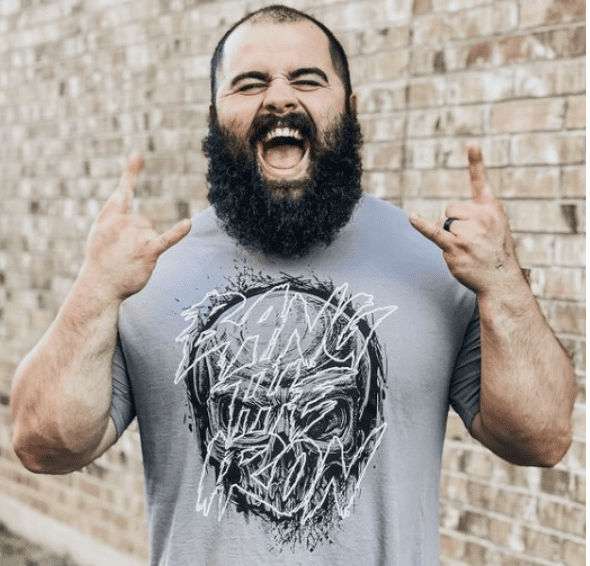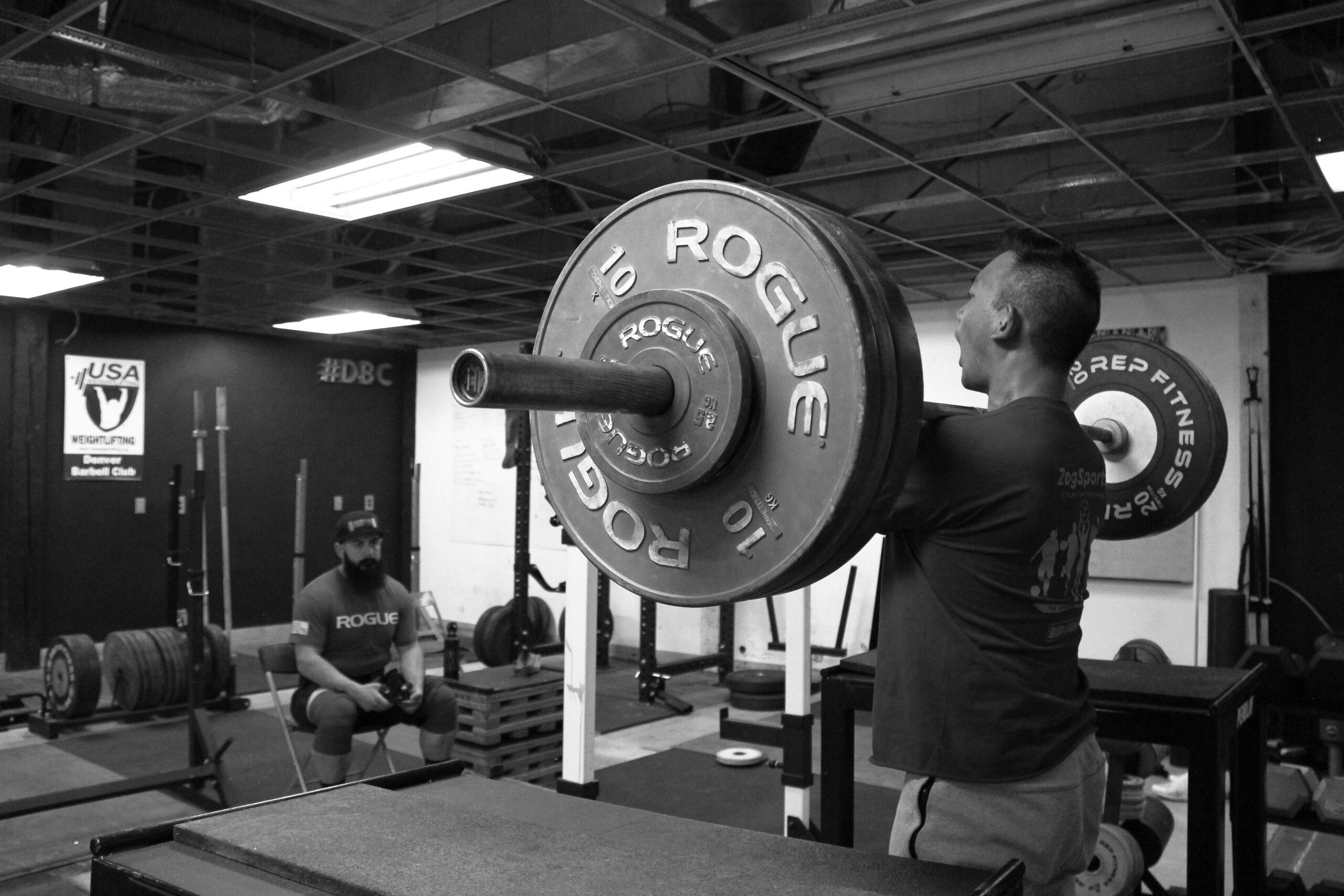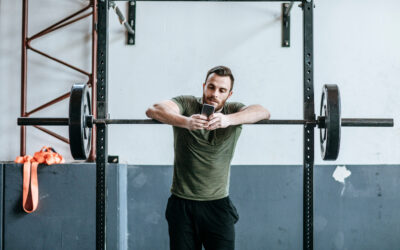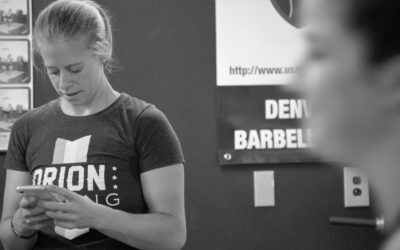5 Common Coaching Mistakes and How to Avoid Them
TOPIC: Coach Development
Coaching is more than writing workouts — it’s about connection, clarity, and long-term impact. But even the most dedicated coaches make simple mistakes that can stall an athlete’s progress. Here’s how to spot (and fix) the ones you might not even know you’re making.

Written By
joseph lucero
Joseph Lucero CSCS, owner of Harvesting Strength, is a powerlifter and strongman coach with years of practical S&C experience in high school, collegiate, and professional settings. His athletes have brought home powerlifting medals, strongman championships, and major bragging rights.
Website
Insta
Programs
Coach Smarter and Harder
Coaching isn’t just about barking cues and writing programs. It’s about understanding people, solving problems, and guiding athletes toward long-term progress. Sure, the programming matters, but the best coaches know it goes way beyond sets, reps, and percentages. Whether you’re new to coaching or have been doing it for years, mistakes happen. Some of them are easy to miss but can hold your athletes back in a big way.
Good news. Most of these mistakes are fixable once you know what to look for. And if you’re ready to enhance your coaching career to a new level, then this is the article for you!
In this article, we’re diving into some of the most common coaching mistakes and how to avoid them. Trust me, I’ve made plenty of these same mistakes myself. Over the years, working with athletes both in person and online, I’ve learned a lot about how to run a successful coaching business. What’s surprised me most is how often even experienced coaches still miss some of these basics. These aren’t just beginner errors, they can sneak up on any coach at any level.
So, let’s break it all down and learn how to coach better!
Are Coaching and Programming the Same Thing?
Let’s make one thing clear: writing a great program is only one part of the job. Coaching is about connection, clarity, and knowing how to help people perform at their best. It’s not just in the gym, but across the board.
Your job as a coach isn’t just to hand out workouts. It’s to teach, listen, observe, and adjust. Athletes need more than just numbers on a spreadsheet. They need someone who can guide them, adapt to their needs, and hold them accountable while still making them feel supported.
That is what is going to make your business thrive! I remember starting off and just writing programs for people, and that would be it. They would be thankful, and hell they would make some progress! But you want to work with individuals for the long run, not just for a simple transaction. So making sure to understand the expectations of coaching, actually working with people and giving them feedback and tools to be better is huge for maintaining and growing a portfolio.
I have clients who have been with me for five years or more! They like the program and they will see the results, but the most important thing many of them comment on is how much discussion we have about their performance, and how I work with them to actually get better with their movements.
What Are the 5 Most Common Coaching Mistakes?
The most common coaching mistakes are pretty straightforward:
- Lack of communication
- Failing to individualize programming
- Lackluster progression and adaptability
- Improper recovery and load management
- Ineffective cues and technique feedback
In my years of working with athletes, both in-person and online, I’ve seen a lot of coaching mistakes, including my own. Some are obvious, like pushing too hard or missing recovery needs. Others are subtle but just as damaging, like miscommunication or sticking with a program that clearly isn’t working.
The truth is, even great coaches can fall into these traps. That’s why it’s so important to keep sharpening your craft, being honest about what’s working and what’s not, and always looking for ways to improve.
Let’s get into some of the biggest coaching slip-ups—and more importantly, how you can avoid them.
1. Lack of Communication
One of the most common issues coaches face is a lack of regular check-ins, leaving athletes uncertain about how to communicate their struggles, progress, or questions. Even with a wealth of knowledge, a coach who fails to maintain consistent communication risks hindering their athlete’s progress. This lack of interaction creates confusion, frustration, and disengagement.
I’ve heard some coaches say, “I put it on the athlete to communicate with me—I shouldn’t have to reach out to them!” But if this is your approach, you’ll likely struggle to maintain a roster, let alone a satisfied one.
To avoid this, it’s crucial for coaches to have an organized communication system in place. Having athletes submit results, using metrics like RPE (Rate of Perceived Effort) to gauge session intensity, and setting clear expectations for regular check-ins are key practices. These strategies ensure both the coach and athlete are aligned and working toward shared goals.
How to Avoid this Mistake:
- Establish a routine for check-ins. Whether it’s through daily or weekly reports, make sure athletes are sending in their session results, including RPE and any relevant notes.
- Develop a clear system for feedback. Coaches should provide both corrective and positive input that is specific and actionable. Instead of vague comments like, “That looked good,” explain what worked and what needs improvement.
- Create a culture of communication. Encourage athletes to share their thoughts on how they feel during training—whether they’re mentally drained or if certain exercises aggravate an injury.

2. Failing to Individualize Programming
Another big mistake coaches make is using a one-size-fits-all approach. Every athlete has unique physical abilities, training backgrounds, and recovery capacities. Applying the same program to every individual fails to account for these differences, often leading to suboptimal results or even injury.
Some athletes may need more mobility work, while others require additional strength development or conditioning. Ignoring these nuances can result in stagnation or burnout, as athletes either become under-stimulated or are pushed beyond their limits.
Now, does this mean you have to reinvent the wheel with each new client? Not necessarily.
Imagine you have a client preparing for a powerlifting competition, and you notice they have a similar profile to some of your other clients. It’s totally fine to use your other clients’ programming as a reference point, but every exercise should be intentional.
For instance, if one client struggles with posture, you might incorporate front squats to help them improve alignment, while another client with hip mobility issues could benefit from box squats.
While the general framework of your programming could be similar, it’s crucial to tailor the exercise selection to the individual’s specific needs, making sure it aligns with their strengths and areas for improvement.
How to Avoid this Mistake:
- Conduct thorough assessments, including movement screenings, strength evaluations, and mobility tests. Understanding an athlete’s baseline is critical to programming effectively. This can be done informally through analyzing their lifting footage.
- Adjust training intensity, volume, and exercise selection based on the athlete’s experience level and goals. Beginners don’t train like elites.
- Consider external factors such as an athlete’s sport, position, injury history, and competition schedule when designing programs.
3. Lackluster Progression and Adaptability
Repeating the same training plan without progression or adaptation leads to stagnation. Athletes require progressive overload and variation to continue improving. The body adapts to stress, and if the stress remains constant, progress will plateau. Some coaches get comfortable using the same training templates without adjusting based on an athlete’s progress or changing needs.
How to Avoid this Mistake:
- Design programs that gradually increase intensity, volume, or complexity. This could be through heavier loads, more repetitions, increased time under tension, or advanced variations of exercises.
- Adjust training phases based on performance data and competition schedules. Athletes should peak at the right times, rather than being overworked leading up to important events.
- Remain flexible and willing to modify training strategies as needed. If an athlete is not responding well to a program, change the approach rather than stubbornly sticking to it.
- Track key performance indicators (KPIs) such as strength levels, movement quality, and conditioning to assess whether progression is happening effectively.
4. Improper Recovery and Load Management
Many coaches focus too much on pushing athletes to their limits without considering recovery. Excessive training loads without adequate rest can lead to overtraining, burnout, and injuries. Recovery is just as important as the training itself — poor load management can result in athletes plateauing or, worse, breaking down due to chronic fatigue or overuse injuries.
How to Avoid this Mistake:
- Every 3-4 weeks, it’s essential to program a deload week to allow your clients to recover and prepare for future training demands. Whether they’re a strongman, bodybuilder, or powerlifter, every athlete needs a deload at some point to help their muscular, skeletal, and nervous systems recharge.
- A good rule of thumb for a deload week is to reduce intensity to about 80% of the regular load. For example, if you’re having a client perform 10 reps of bench press at 200 pounds, during the deload, they should complete 8 reps at 160 pounds — 80% of both the weight and the total reps.
- If you find deload weeks boring, consider programming new progressions during this time. This allows your lifters to adapt to new movements or techniques at a lighter intensity, giving them the chance to adjust to the upcoming stimulus without overloading their systems.
5. TOP MISTAKE: Ineffective Cues and Technique Feedback
While many coaches know which exercises will benefit an athlete, they might not have a deep understanding of biomechanics to properly guide them through the movement. Knowing what exercises work is one thing, but being able to teach the correct technique is where many coaches fall short.
Athletes rely on their coaches to help them refine their movements and prevent injury. When coaches fail to provide clear cues, correct demonstrations, or fail to address movement patterns, athletes can develop poor mechanics that not only hinder progress but also increase injury risk. Coaches often assume that verbal instruction alone is enough, but many athletes need visual and kinesthetic learning to fully grasp new skills.
How to Avoid this Mistake:
- Know the expectations of each movement. Understand the fundamentals of how the body moves. This includes knowing the body’s levers, understanding which muscles control which actions, and being able to identify how the joints should function during common movements like squats, bench presses, and deadlifts. One way I challenged myself to be better and this was to begin training people at little to no cost, just to get experience on how to effectively communicate movement expectations.
- Use clear demonstrations and feedback. Visual and kinesthetic cues help athletes better understand what to do and how to correct their form. One way to do this is to build a digital portfolio of yourself or someone else performing a movement to standard — if you use TrainHeroic, they’ve already done this for you. The videos can be a reference point when having discussions with clients about how to properly perform any movement or how to integrate a specific cue for success.
- Incorporate video analysis. Video analysis is a powerful tool for breaking down technique. Slow-motion footage allows coaches to spot subtle errors in technique that can’t be seen in real-time. This gives athletes the ability to make precise corrections. I will use an educational software called “Loom” to broadcast my screen with the client’s videos to help talk about technique, errors in performance, and where to improve their ability.
- Keep learning. The best coaches are always expanding their knowledge. Whether it’s through mentorship, courses, or keeping up with the latest research, a commitment to continuous education ensures that coaches stay effective and can provide the best guidance to their athletes.
Final Thoughts
Mistakes, both big and small, are inevitable in coaching. But by recognizing and addressing these common pitfalls, you can become a much more effective coach. Remember, it’s not about avoiding mistakes entirely, but about continuously refining your approach, seeking knowledge, and always being open to improvement.
The best coaches are those who remain humble, always striving to be better, not just for themselves but for the athletes they work with. Whether you’re a novice coach or a seasoned pro, there’s always room to grow.
If you take these lessons to heart and apply them to your practice, you’ll not only see better results for your athletes, but you’ll also find greater satisfaction and success in your career as a coach. Keep learning, keep improving, and most importantly, keep connecting with your athletes, because at the end of the day, they are the reason we coach.
Find Your Perfect Training Plan
Sometimes all you need to reach your destination on your fitness journey is an expert guide. Look no further, we've got you covered. Browse from thousands of programs for any goal and every type of athlete.
Try any programming subscription FREE for 7 days!
Related Articles
You May Also Like...
5 Powerful Tips for Fitness Coaches Who Want to Stand Out
If you’re in the trenches as a coach or trainer, you already know this industry doesn’t hand out gold stars for effort. The fitness space is saturated, competitive, and often filled with more flash than substance. If you're just starting out or years deep, what...
The Fundamentals of Program Design for Strength & Conditioning Coaches
Great programming isn’t just sets and reps on a spreadsheet — it’s coaching with intention. You might be training a first-year varsity hopeful or a pro prepping for their next big comp. Either way, your job is to build something that works for them. The flashiest...
Effective Ways to Coach At-Home Athletes
Transitioning to remote coaching presents unique challenges for strength and conditioning coaches, especially when athletes lack access to standard gym equipment. Effective communication and creative programming are essential to maintain engagement and ensure athletes...
5 Powerful Tips for Fitness Coaches Who Want to Stand Out
If you’re in the trenches as a coach or trainer, you already know this industry doesn’t hand out gold stars for effort. The fitness space is saturated, competitive, and often filled with more flash than substance. If you're just starting out or years deep, what...
The Fundamentals of Program Design for Strength & Conditioning Coaches
Great programming isn’t just sets and reps on a spreadsheet — it’s coaching with intention. You might be training a first-year varsity hopeful or a pro prepping for their next big comp. Either way, your job is to build something that works for them. The flashiest...

Want more training content?
Subscribe
For Coaches
For Athletes
About
Support
Training Lab
Access the latest articles, reviews, and case studies from the top strength and conditioning minds in the TH Training Lab!
Made with love, sweat, protein isolate and hard work in Denver, CO
© 2024 TrainHeroic, Inc. All rights reserved.





